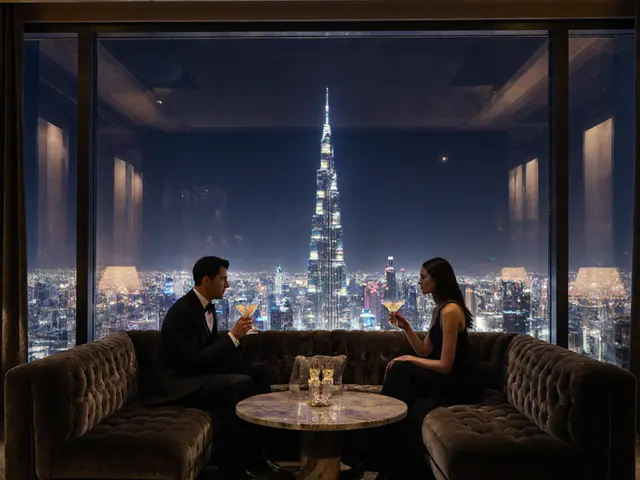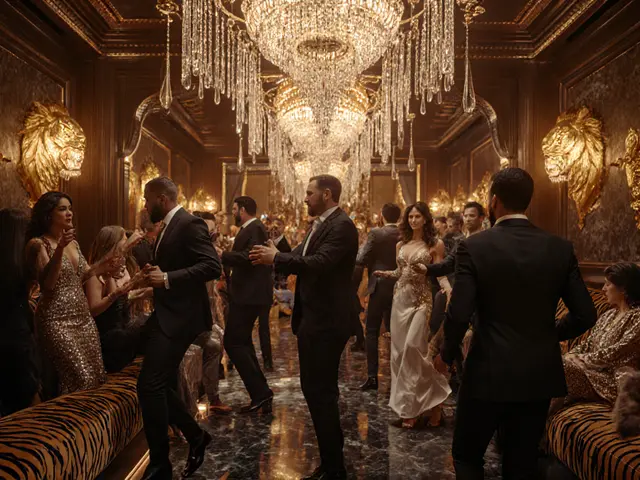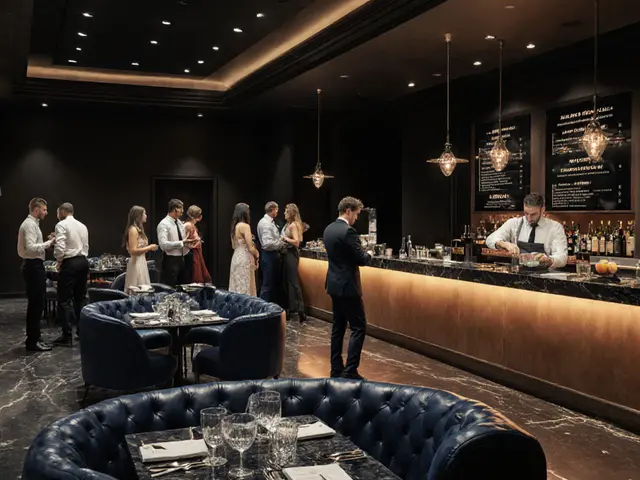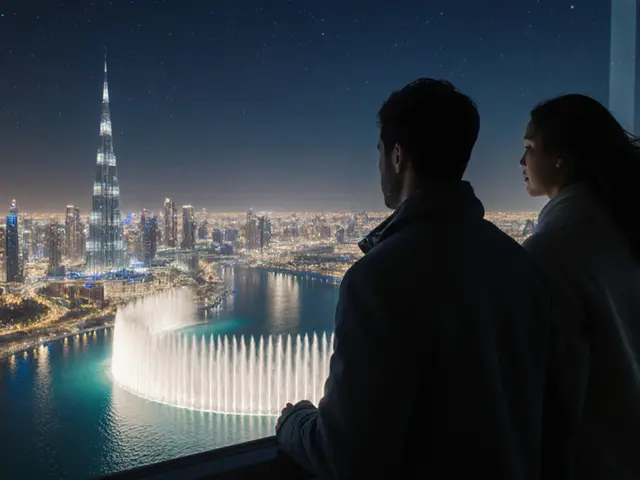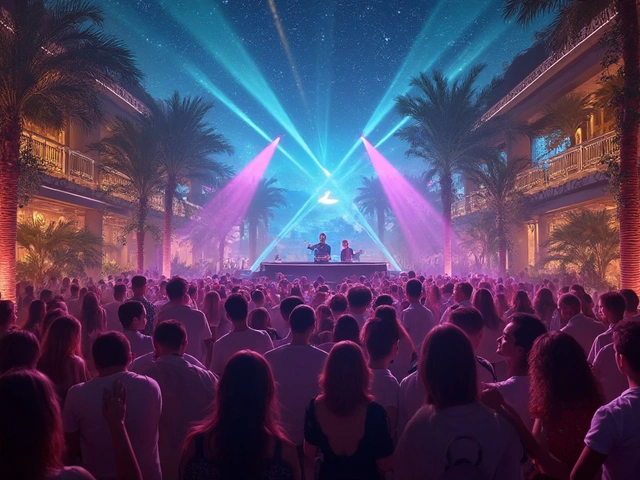![]()
There’s something surreal about glancing up at Dubai’s skyline, especially if you’re walking along Sheikh Zayed Road or gliding down the Dubai Water Canal. This isn’t just a collection of tall towers—it’s a tribute to vision, ambition, and kicking sand in the face of ‘what’s possible.’ The journey of Dubai’s architecture, from wind-tower barjeel homes in Bastakiya to the futuristic giants of today, is a show of relentless invention. For newcomers, it’s a jolt: glass and steel seem to compete for sunlight, each building with stories of bold ambition. But these aren’t just drawings brought to life; they’ve changed the way people see and interact with cities, setting the standard that other dreamers worldwide try to match.
The Rise of Dubai: A Story Woven with Iconic Landmarks
No place has chased the extraordinary quite like Dubai. Decades ago, sand and sea ruled this land. Today, iconic buildings in Dubai like Burj Khalifa, Burj Al Arab, and Palm Jumeirah set a new rhythm, drawing crowds that once only pictured bucket-list cities like New York or Singapore. The story here isn’t just told in meters and floors, but in aspirations—what it means for locals, expats, and millions of curious visitors.
Long before the world’s tallest tower staked its claim, Dubai found its pulse in the architecture of tradition. The original wind tower houses, with their open courtyards, pulled in breezes at a time when air conditioning felt like wizardry. Fast-forward, and that same drive to work with the climate bred some of the city’s best-known marvels. In Dubai, architecture isn’t just about scale; it’s about adaptation, from reflecting intense light with reflective glass to pivoting whole buildings (like the Dubai Frame, which visually links past and present).
For residents and expats, these places become more than background—they’re meeting points, conversation starters, and reminders that if you want a certain skyline, you can just build it. It’s not just about flashy towers; even modest but distinct spots, like the Jumeirah Mosque with its snowy domes, show that Dubai respects its roots even as it grabs the future.
And the numbers? They make everything real. Dubai is home to more than 20 structures competing to be ‘the tallest,’ and the Burj Khalifa alone can be seen from as far away as 95 kilometers on a clear day. Add in the fact that Dubai hosts the annual World Architecture Festival (where the world’s best designers present ideas meant for tomorrow), and you start to understand the constant pulse of progress.
Burj Khalifa: The Needle That Stabbed the Sky
No building grabs attention quite like the Burj Khalifa. It’s not just ‘the world’s tallest’ — it’s the record breaker that puts Dubai’s ambition in a global spotlight. Rising 828 meters over Downtown Dubai, this is more than a skyscraper. It’s a vertical city, mixing offices, fine restaurants, the funky At.mosphere Lounge, and the world’s highest observation deck. On a clear evening, the view stretches so far you get a weird sense of floating above history.
Constructed over six years and opened in 2010, the Burj Khalifa wasn’t built just to set a record. Developers wanted something nobody could ignore. The unique ‘triple-lobed’ design is inspired by the spider lily, a desert flower, and every setback on the way up actually helps the tower slice through high-speed winds. That’s not just cosmetic—it’s essential when you’re dialing in at over half a mile tall.
Inside, exclusivity rules. The Armani Hotel, sitting on several floors, offers suites straight from Giorgio Armani’s imagination. Residents in The Residence catch sunrise and sunset at heights that make the Palm Jumeirah look like a line on a sandbox. But here’s a tip that most tourists miss: the best view of the tower itself actually comes from the ground, looking up from places like the Dubai Fountain where every evening, 6,600 lights and water jets launch epic displays set to music.
But what’s the Burj’s real impact? Beyond its silhouette, it triggered a ripple effect. Skyscrapers in Dubai started to compete in both height and drama—think JW Marriott Marquis and the twisting Cayan Tower. Even the hospitality industry changed, as every new luxury hotel wanted a ‘wow’ moment to top the next. The Burj Khalifa isn’t just a building. It’s Dubai’s dare to dreamers and risk-takers, calling them to raise the bar every single time.
Burj Al Arab and the Age of Seven-Star Glamour
If luxury needed a flag, Burj Al Arab would be flying it. Shaped unmistakably like a billowing dhow sail, this hotel put Dubai on the world’s luxury map. Opened in late 1999, engineered on its own man-made island, and sprinkled with 24-karat gold across almost every public surface, Burj Al Arab set the ‘Dubai standard’ for over-the-top hospitality.
Inside, every suite offers jaw-dropping views of the Arabian Gulf. Private reception desks on every floor, a fleet of Rolls-Royces for guests, a helipad (where Roger Federer and Andre Agassi once played a rooftop tennis match)—it’s infectious, larger-than-life energy. Restaurants like Al Mahara (with its floor-to-ceiling aquarium) or the sky-high Skyview Bar serve up scenes as stunning as the cuisine. Locals and expats quickly embraced the idea that Dubai would not settle for ordinary; every city around the Gulf tried to chase this level of opulence, but Burj Al Arab stays unmatched.
Here’s the thing: designers behind Burj Al Arab worked tirelessly to root its look in local culture. The sail motif? A direct nod to the sea-faring history of Dubai’s traders. That blending of past and future is everywhere, right down to traditional tapestries and fountains set against futuristic swooping glass.
Tourists sometimes assume Dubai is all new, all imported. Burj Al Arab says otherwise—the city’s greatest architectural leaps carry echoes of Bedouin boats and ancient hospitality traditions. For anyone living in Dubai, a classic Friday brunch or a high tea here isn’t just about showing off—it’s a celebration of the city’s original drive: to go beyond what the world expects, every single time.
Palm Jumeirah, Emirates Towers, and Structural Imagination
Telling the story of Dubai’s revolutionary design means shining a spotlight on Palm Jumeirah: a project that blurred the line between land and water, math and art. This artificial archipelago, shaped like a date palm, wasn’t just a branding move—it helped Dubai solve land shortages and rewrite the playbook for waterfront living. Villas, hotels like Atlantis The Palm (with its wild aquariums and underwater suites), Nakheel Mall, and even the new Palm Tower stretch lifestyle possibilities that architects in colder cities can only daydream about.
For residents, Palm Jumeirah is now a full-blown, lived-in neighborhood—beaches, shops, restaurants, and schools all rolled onto an engineered reef. The boldness was infectious: Dubai Marina and The World Islands soon followed. There’s no bigger symbol of how Dubai sees the desert and the sea as building blocks for dreams, not boundaries.
Then there’s Emirates Towers: twin icons marking the heart of Dubai’s business district since 2000. These two structures, with clean lines and sharply angled glass, make a bold architectural statement. Where Palm Jumeirah is playful, Emirates Towers means business—literally. They inspired a new urban skyline along Sheikh Zayed Road, redefining what business environments should look and feel like. For Dubai’s professionals, meeting in the shadow of Emirates Towers signals ambition and success, no matter which industry you’re in.
Here’s some trivia most people miss: when Emirates Towers opened, they were among the world’s tallest all-female-engineered buildings, an unheard-of feat at the time. Local talent, international know-how—as ever, Dubai’s strength is pulling the best from everywhere and making it its own.
Want an easy tip? Sunrise runs or bike rides on the Palm Boardwalk are free and show you this man-made miracle from a whole new perspective. If you’re looking for serious wow moments, brunch at Atlantis or cocktails at The View (the observation deck atop Palm Tower) give the kind of photo op your friends outside Dubai will envy.
| Building | Architect/Developer | Height (m) | Completion |
|---|---|---|---|
| Burj Khalifa | Adrian Smith / Emaar | 828 | 2010 |
| Burj Al Arab | Tom Wright / Atkins | 321 | 1999 |
| Palm Jumeirah | Nakheel | N/A (Landmass) | 2006 |
| Emirates Towers | Hazel Wong | 355 (Office); 309 (Hotel) | 2000 |
Vanguard and Vision: The New Icons Shaping Tomorrow’s Dubai
The story of iconic buildings in Dubai doesn’t rest—it morphs and multiplies every few months. In recent years, new marvels for culture, eco-design, and innovation have joined the classics. The Museum of the Future, with its swirling, silver torus and calligraphy window, tosses the rulebook out the window. Opened in 2022, it’s been called “the most beautiful building on earth” by visitors who mean business. Inside, the museum explores sustainability, AI, and how we might live tomorrow, connecting Dubai’s spirit of discovery with practical problem-solving.
Dubai Opera, nestled in the heart of Downtown, flips the script for event spaces. Designed to echo the curves of a traditional dhow, its flexible stage can turn from concert hall to banquet space in hours. Opera isn’t just for tuxedos and tiaras here—it’s for blockbusters, family shows, and even the city’s wildest stand-up comedy nights. Locals and tourists join in—Dubai’s creative calendar is stacked all year, and the building itself has become as much an attraction as the acts it hosts.
On the sustainability front, the Sustainable City and the soon-to-be-finished Dubai Creek Tower push boundaries. Solar panels, recycled water loops, and shaded walkways all reveal how Dubai wants to lead the sustainable cities movement instead of just playing catch-up. There’s a lesson here: every decade, Dubai flips the script, mixing daring design with practical needs that suit desert life. That’s why you see so many architects, students, and influencers pouring in for city tours, the annual Art Dubai festival, or even just to Instagram their mornings in Alserkal Avenue—a creative district built in old warehouses.
If you’re new in Dubai, get in on the action: join a guided night walking tour around the Dubai International Financial Centre (DIFC), where new towers pop up alongside quirky art installations. Or dive into Expo City Dubai, where smart pavilions built by the world’s best minds are still on display after Expo 2020 wrapped, now home to year-round business, food, and art pop-ups.
How Dubai’s Icons Keep Inspiring New Visions
What makes a building ‘iconic’ in Dubai isn’t just size or flashy engineering. It’s how that place inspires you to see the city—and the world—through fresh eyes. Maybe it’s the way the sun flares off Cayan Tower’s twisted frame, or the buzz outside Dubai Mall at sunset, everyone snapping photos of Burj Khalifa’s light show. These are buildings that make people see possibility, not limits.
Architectural students in the UAE study these monuments as templates—not only for form but for fearless invention. Businesses lean on the city’s skyline for branding, and families weave tales around visits to Atlantis or lazy days on the Palm. Even the city government uses these icons to draw global tech giants, sports tournaments, and artists. Iconic spots like Dubai Design District (d3) now nurture young creators who blend Emirati culture and high-tech design into the next wave of signature buildings.
Tips for digging deeper? Jump on one of Dubai’s specialized architecture tours—several local companies run morning walks for everyone from history buffs to Instagrammers. If you want a family twist, explore Al Fahidi Historical District, where you’ll find restored wind towers next to quirky museums and hidden cafes (try the traditional Emirati breakfast at Arabian Tea House; it’s a favorite of locals who swear by strong karak tea).
Dubai’s iconic buildings aren’t just eye-candy—they’re blueprints for anyone bold enough to imagine, adapt, and change the rules. Wherever you walk or drive in the city, let these buildings spark your own wild ideas. After all, no matter where you stand in Dubai, you’re always just a stone’s throw from history in the making.
